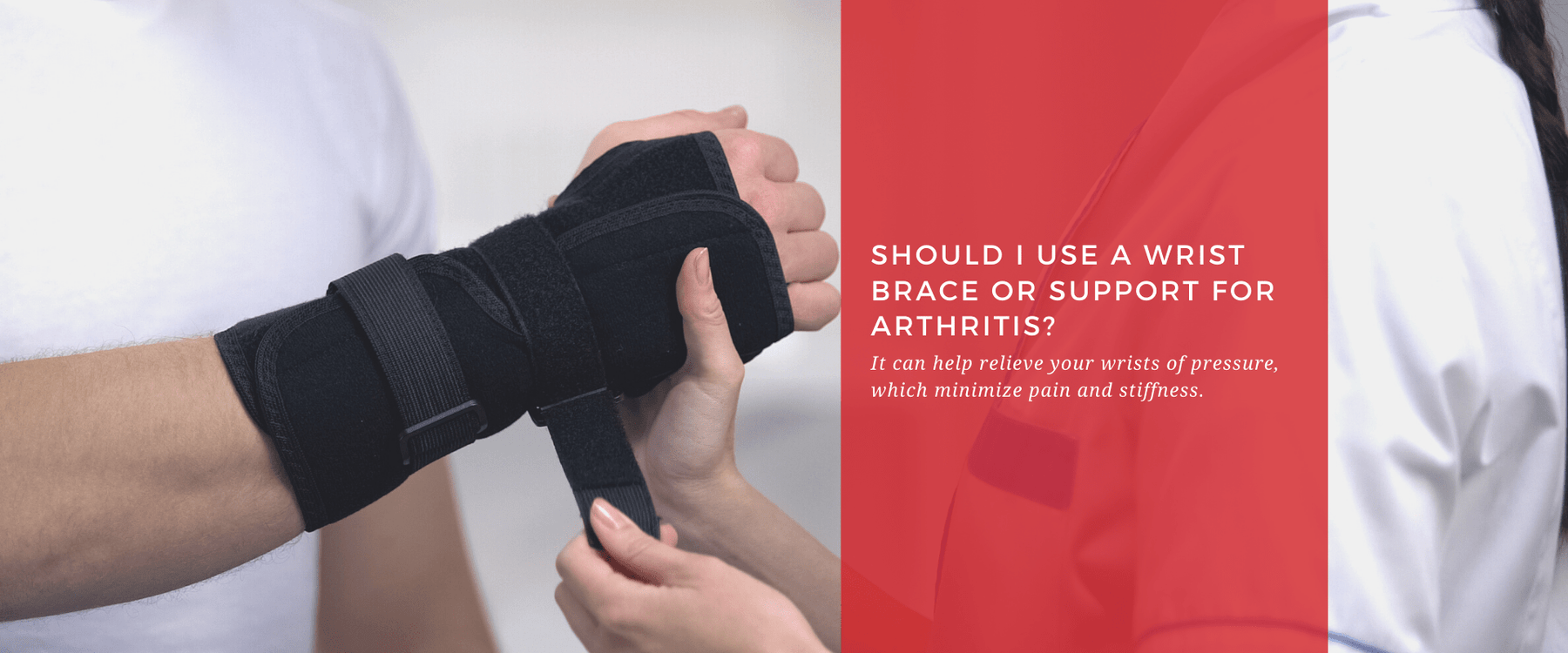With over 1 million orders

Should I Use A Wrist Brace or Support for Arthritis?
As an arthritis sufferer, you have at one point used joint supports and braces to help manage your symptoms.
Like many, you were probably apprehensive at first. Could something so simple, so straightforward actually work? But after having slipped into your first wrist brace, you almost immediately felt the relief of what additional support and stability on a vulnerable joint these braces can do.
How Do Wrist Supports and Braces Work?
Wrist braces are designed to give joint support when you have to use your hands or by keeping your wrist in a neutral position while you’re sleeping or during movement. This helps relieve your wrists of pressure, which minimize pain and stiffness. They can also be used to manage contracture—the shortening of tendons, muscles, and tissues that could result in deformity of joints.
Arthritis patients turn to supports and braces for weak or inflamed joints to provide much needed support and promote better circulation to the area that allows for healing and pain relief. In some instances, it can be used to fix joint and bone alignments as well.
Do I Need To Use Wrist Supports or Braces?
The decision to use supportive tools or compression aids will depend on how your joint feels and the advice of a trusted physician.
Ultimately, the goal is for you to be able to use your hand without the need for any wrist support or brace for as long as possible, but that requires finding a balance between using your own strength and ensuring that you don’t further aggravate your joints.
Remember though that to allow your joint to recover, you want to gradually build strength as well. Strengthening your joint will allow you better control of your wrist and manage pain better. We recommend using our wrist supports in conjunction with tried and tested exercise programs that we also offer through our handbooks to improve your wrist’s flexibility and range of motion.
Dr. Arthritis Top Tips for Using Wrist Supports and Braces
- Get the right fit. Unless told specifically by your doctor, most of us will simply need a light brace, similar to our Copper Lined Wrist Support. This particular style features a one-size-fits-all mechanism that can offer a tailored fit to provide the best support and compression for your wrist.
- Wear a wrist brace during activities that might trigger pain. This usually means wearing them during the day when your wrist will be subjected to repetitive movements or have to go through motion that will add strain and exacerbate your symptoms.
- Wear your wrist brace at night. Most people end up bending their wrists while they’re asleep, which puts added pressure on your joints. You want to keep your wrist in a neutral position to relieve pain symptoms and stiffness in the morning.
- Take off the brace once in a while and move your wrist around. If you’re wearing your brace throughout the day, remember to remove it once in a while and allow your wrist to move around gently. This allows your muscles to loosen up. Try out our wrist exercises, which you can find in our handbook, to help strengthen your muscles and joints.
- Try to find a brace that’s stylish. This isn’t necessarily a requirement for a brace to be effective, but wrist supports and braces can be cumbersome. If you have to wear one to manage chronic pain, it helps to have options. Dr. Arthritis’ range of wrist braces comes in classic black, but are also available in nude, pink and most recently, in blue.
For questions and inquiries about our latest product please feel free to leave a comment below or join the conversation on our Instagram or Facebook.
